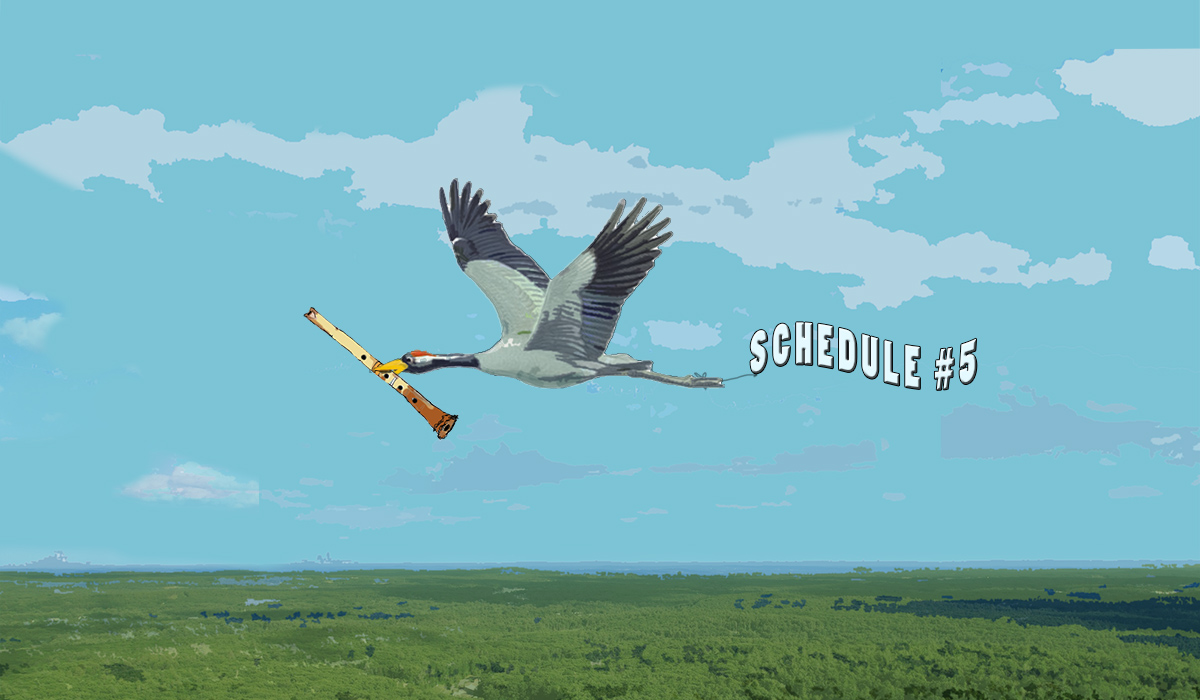SCHEDULE & CONTENT
EVENT #5 2+3 MARCH 2024
INTERMEDIATE/ADVANCED
SATURDAY 2 MARCH 2024
| Session 1.1 | 09h30 – 10h00 | Gunnar Jinmei Linder – ro-buki & short talk |
| Session 1.2 | 10h05 – 11h35 | Gunnar Jinmei Linder – Uchi-kae Kyorei (Kinko-ryū/Chikumeisha) |
| Session 1.3 | 11h45 – 13h00 | Gunnar Jinmei Linder – Uchi-kae Kyorei (Kinko-ryū/Chikumeisha) |
| BREAK | ||
| Session 1.4 | 14h00 — 15h15 | Elizabeth Brown – Dialect (contemporary, E. Brown, 2018) |
| Session 1.5 | 15h25 — 16h25 | Elizabeth Brown – Dialect (contemporary, E. Brown, 2018) |
SUNDAY 3 MARCH 2024
| Session 2.1 | 09h30 – 10h00 | Akihito Obama – ro-buki/technique tip |
| Session 2.2 | 10h05 – 11h20 | Akihito Obama – San’ya(KSK honkyoku, 山谷/Mountain Valley) |
| Session 2.3 | 11h30 – 13h00 | Akihito Obama – San’ya (KSK honkyoku, 山谷/Mountain Valley) |
| BREAK | ||
| Session 2.4 | 14h00 — 15h15 | James Nyoraku Schlefer – Ichijo (modern, Seiho Kineya, 1970) |
| Session 2.5 | 15h25 — 16h25 | James Nyoraku Schlefer – Brooklyn Sanya (contemporary, J. Schlefer, 1999) |
About the pieces
SATURDAY
Gunnar Jinmei Linder – Uchi-kae Kyorei 打替虚霊 (honkyoku/ Kinko-ryū)
According to the writings of Kurosawa Kinko III, the piece Uchikae Kyorei was transmitted into the Kinko school repertoire by Kawahara Tanzō, a komusō with his honsoku license issued from the Seizan-ji temple. It is also stated that the piece was commonly used at the shakuhachi teaching studios that gradually increased in number in the city of Edo.
The word uchi-kae consists of two words: uchi meaning “a hit” and kae “a change”. The word uchi-kae is used in jiuta-sōkyoku – or sankyoku – ensemble playing denoting rhythmical patterns with instruments alternatively playing on front and back beats. It can also denote a change in the order of accentuated beats, so that the second beat gets more accentuated than the first in a two-beat rhythm.
Yamaguchi Gorō said that he understood the title as implying “the interesting aspects of the change of sound”, and that he performed the piece with this musical aspect in mind.
Elizabeth Brown
Dialect (contemporary, E. Brown, 2018, revised 2023) is inspired by the continual evolution of language. In teaching this piece, Brown will show how her own musical language is influenced by Kinko-ryu style, and talk about what makes shakuhachi music resonant and idiomatic.
SUNDAY
Akihito Obama
San’ya(山谷/Mountain Valley, KSK honkyoku) Among the “Sanya” pieces, which has many honkyoku with the same name (pronunciation), this is a quiet song that gives you the feeling of an eternal flow, like an ink wash painting or a landscape painting. It is said to be a tradition from Oshu (the northern part of Japan).
James Nyoraku Schlefer
Ichijo (Seihō Kineya, 1970)is a powerful solo shakuhachi piece by Seihō Kineya that was inspired by the sudden death of a dear friend. Typical of Kineya’s style, the music uses Japanese scale patterns within a western structure and builds to an impressive climax before surrendering to the inevitability of fate.
Brooklyn Sanya (contemporary, J.N. Schlefer, 2001 rev. 2021), is Nyoraku’s take on the classic honkyoku, of which there are many versions. Traditional patterns are interwoven with original melodies.
